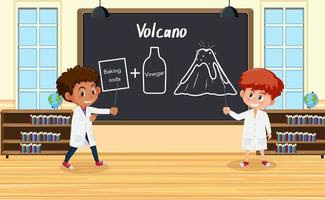Introduction:
Welcome to the world of DIY science experiments! Today, we're going to dive into one of the most classic and explosive experiments around: the baking soda and vinegar volcano. Get ready to witness an exciting chemical reaction that will leave you in awe. Let's gather our materials and embark on this volcanic adventure!
Materials:
- Small plastic bottle
- Baking soda
- Vinegar
- Dish soap (optional)
- Red food coloring (optional)
- Funnel
- Tray or basin (to catch the eruption)
Procedure:
1. Set up your experiment area on a flat surface and place the tray or basin to catch any overflow.
2. Position the small plastic bottle at the center of the tray or basin.
3. With the help of a funnel, carefully pour baking soda into the bottle until it reaches about one-third of its capacity.
4. For some extra oomph, consider adding a few drops of dish soap and red food coloring to the bottle.
5. Slowly pour vinegar into the bottle using the funnel and watch the magic unfold.
6. Observe the foamy eruption with wide-eyed excitement and take note of your observations.
The Chemical Symphony:
As the vinegar mingles with the baking soda inside the bottle, a chemical reaction known as an acid-base reaction takes place. Vinegar, being an acid, reacts with the baking soda, a base, resulting in a spectacular eruption. But what's causing all the fuss?
Carbon Dioxide Takes Center Stage:
During this reaction, carbon dioxide (CO2) gas is released. As the vinegar and baking soda mix, carbon dioxide bubbles form and accumulate within the liquid. The pressure from these gas bubbles eventually becomes too great, forcing the liquid mixture to erupt in a foamy cascade. It's a fantastic demonstration of the power of gases and the buildup of pressure!
Adding Extra Pizzazz:
By adding a touch of dish soap and red food coloring, you can take this experiment to the next level. The dish soap creates more foam and bubbles, intensifying the eruption. Meanwhile, the food coloring adds a visually striking element, making the eruption even more captivating to watch.
Volcano vs. Volcano:
While the baking soda and vinegar volcano experiment may resemble a miniature volcanic eruption, it's important to note that real-life volcanic activity is far more complex and awe-inspiring. Volcanoes on Earth involve the eruption of molten rock, ash, and a variety of gases from deep within the planet's interior. Nonetheless, this experiment offers a glimpse into the exciting world of chemical reactions and the explosive potential that lies within everyday ingredients.
Conclusion:
The baking soda and vinegar volcano experiment never fails to deliver an explosive experience. It's a thrilling demonstration of chemical reactions, showcasing the reaction between an acid (vinegar) and a base (baking soda). The foamy eruption, fueled by the release of carbon dioxide gas, mesmerizes and educates in equal measure. By adding dish soap and food coloring, you can enhance the spectacle and create a truly eye-catching display.
So, gather your materials, prepare for a bubbling adventure, and unleash the power of the baking soda and vinegar volcano. Science has never been so exciting! Remember to conduct the experiment in a safe and controlled manner, and prepare to be amazed by the wonders of chemistry. Happy experimenting!
